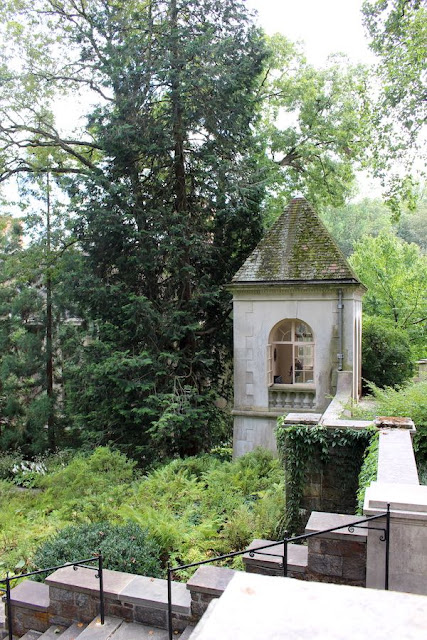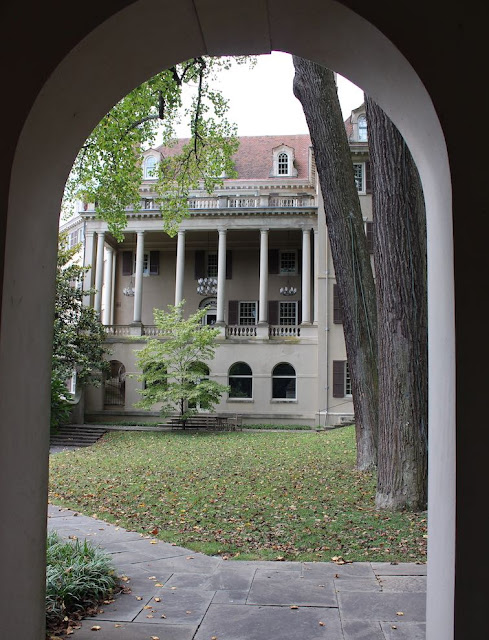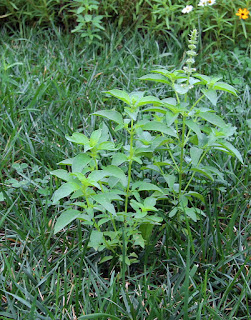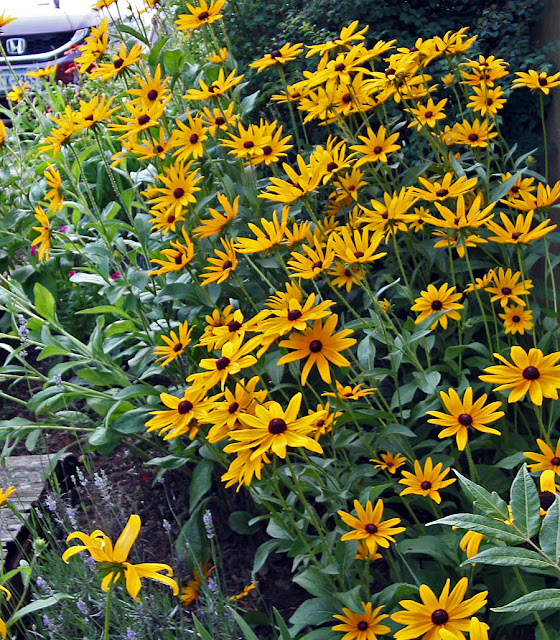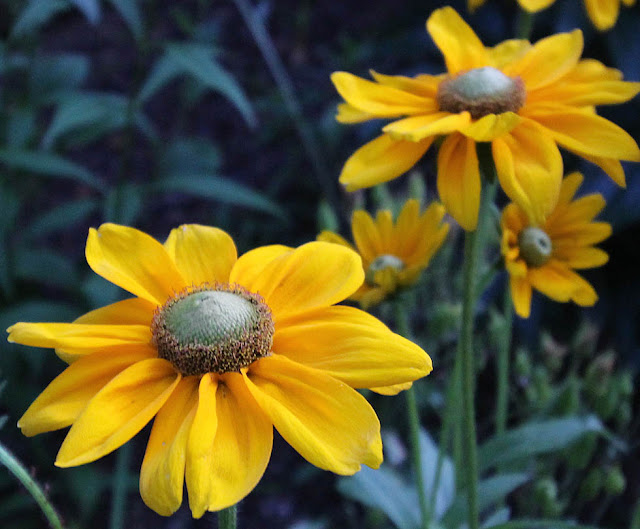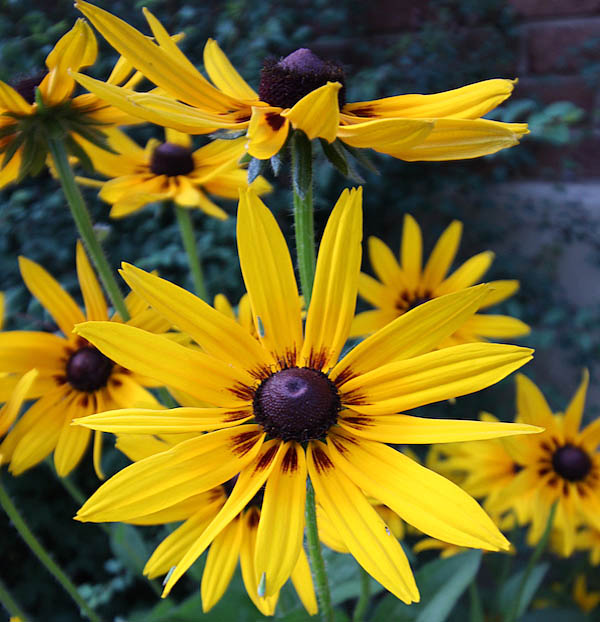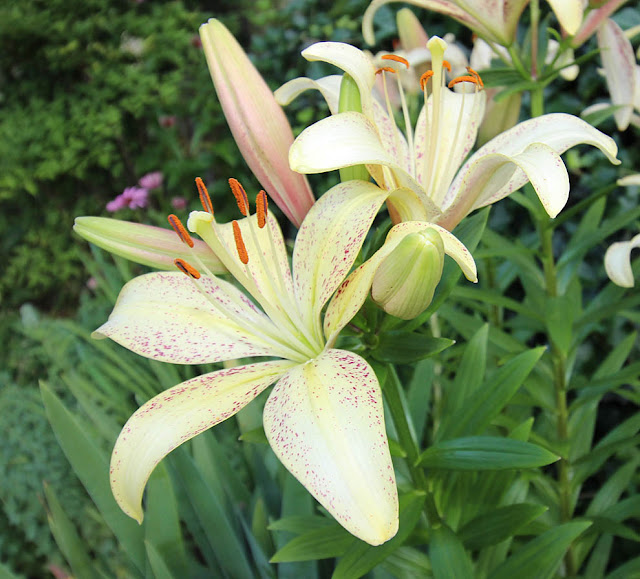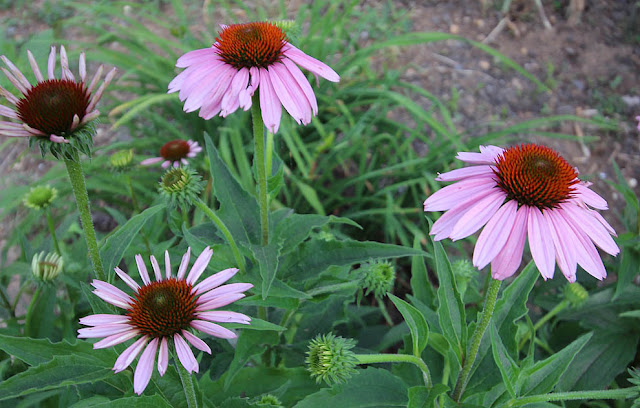Some facts for the botanical garden:
• Founded in 1859 with 79 acres on land provided by wealthy immigrant Henry Shaw
• Center for scientific botanical research
• 1800 species in the daylily garden, and 1500 species in the iris garden
• Over 50 water lily species (blooming while I visited)
• Incredible web site for references and information
• 24,000 square feet interior geodesic dome Climatron (enclosed greenhouse)
Some of my images that impressed me from the morning of my long, sweaty, late-summer day follow.
 One of the water lily pools with Chihuly sculptures and the tropical greenhouse 'Climatron' beyond. I thought the large colorful sculptural balls detracted from the beauty of the water lilies.
One of the water lily pools with Chihuly sculptures and the tropical greenhouse 'Climatron' beyond. I thought the large colorful sculptural balls detracted from the beauty of the water lilies. Closeup of some water lilies.
Closeup of some water lilies. Another Chihuly creation for the seating areas within one of the rose gardens.
Another Chihuly creation for the seating areas within one of the rose gardens. Interior of the historic conservatory, probably the original.
Interior of the historic conservatory, probably the original. The Ottoman Garden, a walled garden with Mediterranean plants, shady walks, water ...
The Ottoman Garden, a walled garden with Mediterranean plants, shady walks, water ...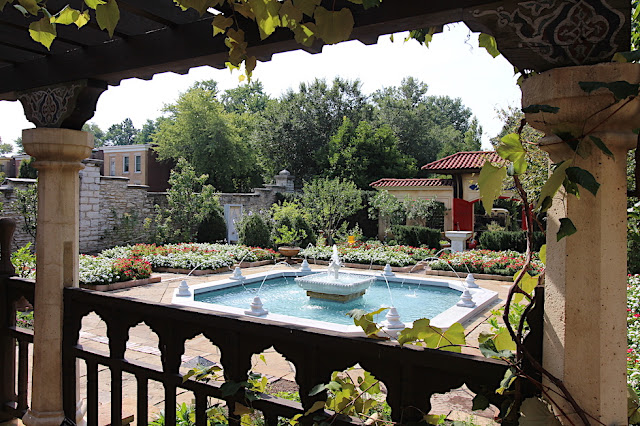 ... and an inward-looking perspective.
... and an inward-looking perspective. And an early sundial for timekeeping.
And an early sundial for timekeeping. The playful fountain jumps from one pool to another overhead almost like it is alive and toying with you.
The playful fountain jumps from one pool to another overhead almost like it is alive and toying with you. A landscaper's view of the Japanese garden based on open vistas of natural and harmoniously placed vegetation.
A landscaper's view of the Japanese garden based on open vistas of natural and harmoniously placed vegetation. A carefully composed view from the bridge.
A carefully composed view from the bridge.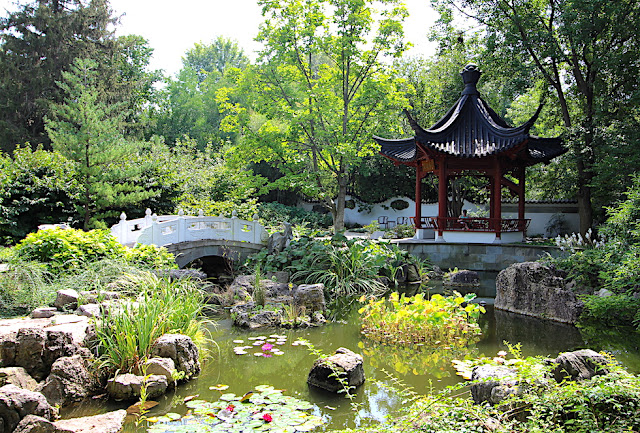 A Chinese garden with its more intimate enclosed spaces and landscape.
A Chinese garden with its more intimate enclosed spaces and landscape.






